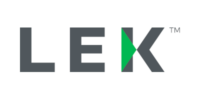Forbes September 30, 2024
Patients have long pushed for greater convenience in healthcare, seeking easier and more regular access to telemedicine, online appointment-making and texting with doctors.
Healthcare, for its part, has been slow to change. As wait times grow longer, the process of accessing care remains as complicated as ever.
In the last three years, however, something has begun to shift.
Advances in technology, particularly generative AI and at-home diagnostics, have turned the once-distant idea of consumerism in medicine into a fast-approaching reality.
Patients can now bypass the doctor’s office and diagnose dozens of medical problems without leaving the house. Already, the home diagnostics market generates $5 billion annually and is expected to double by 2032. Meanwhile, 80% of Americans now use generative...







